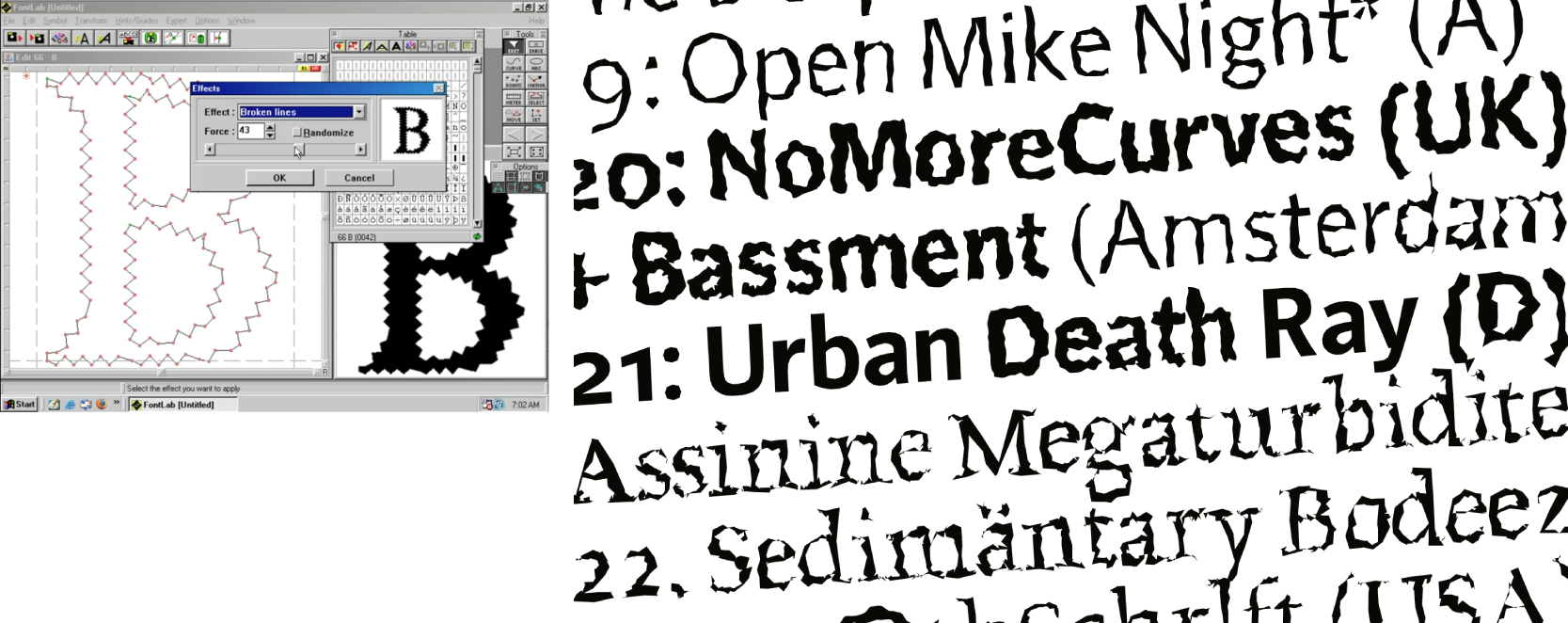About this project
The first thing to say is that this is nothing new. For almost as long as typefaces have been encoded within a font format designers have been programmatically manipulating their outlines. Indeed a 1993 version of FontLab 2.5 offered a choice of effects in much the same way this project does. Four years earlier Erik van Blokland and Just van Rossum had created the random font Beowulf whose shapes changed *inside* the printer using raw PostScript. That was thirty-one years ago. The mind boggles.

Right: Beowulf font specimen
So what is this? This is a collection of procedurally generated display fonts and the codebase that was used to design them. ‘Procedural’ or ‘generative’ is another way of saying an algorithm was essential to the output and frankly algorithm to me is just another word for the design. Many of these ideas began on paper and were reverse-engineered in to a system with more than a hint of randomness thrown in. So though they began as ideas on paper the systemisation is the design, or better yet, the template.
These designs are nothing without an input source. By nothing I mean it literally: no input, no output. The scripts apply their individual logic to the source material, using it as a basis for modification. In this case Rubik by Hubert and Fischer was used but you can use any font you like assuming the license permits and you’re willing to tinker with the custom parameters. There’s no reason why these scripts can’t be applied to icons, lettering or any other vectors for that matter.
Hopefully this project has succeeded in making it easier to create your own generative fonts by creating a framework that solves some of the trickier common problems. Speaking of the code, it’s written in Python for GlyphsApp 2.6.6 and below. I’m aware Glyphs has recently updated to version 3 and am planning to update the library in the near future. Being Python-based it should be relatively easy to port to other type design tools.
Regarding the designs themselves they show nothing if not the possible variety in this approach. Some are prosaically generative (Maze, Storm), textured (Distresed, Dirt), illustrative (Bubbles, Beastly), hand-made (Doodle Triangles, Scribble), others are more unique (Glitch Pop, Sea Camouflage). Scripting designs in this fashion can be both a creative and production tool.
All the fonts provided here are done so under the SIL Open Font License v1.1. You can use them in your designs, share them freely or use them as a basis for something entirely new.
Many thanks to Dave Crossland and Google Fonts for helping liberate this project from a lonely hard drive. Thank you also to Simon Cozens who reviewed and refactored the code into an all-round leaner state. Last but not least, danke vielmals Johannes Neumeier for his patience and expertise in developing this website.
More to come.
